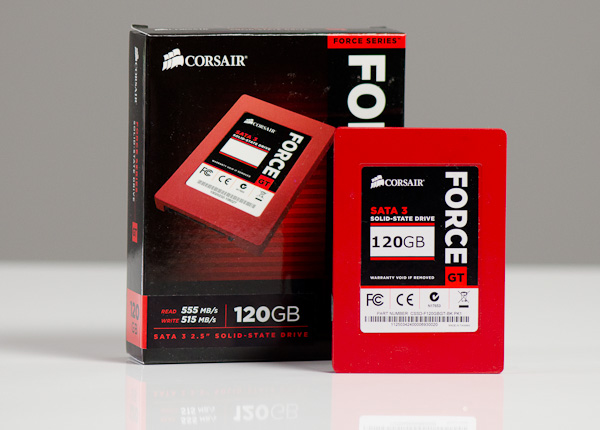The SandForce Roundup: Corsair, Kingston, Patriot, OCZ, OWC & MemoRight SSDs Compared
by Anand Lal Shimpi on August 11, 2011 12:01 AM ESTFinal Words
There really shouldn't be any surprises here. Given the same controller, the same NAND and the same firmware there's no difference between SandForce SSDs. They may look different and they may be priced differently, but they are effectively the same. So how do you pick between otherwise identical drives?
Firmware availability is an important feature. OCZ's exclusive arrangement with SandForce still gives it the advantage here. No competing SandForce drive gets firmware updates as quickly as OCZ owners. That's not always a good thing however. In the interest of pushing out fixes and improvements as quickly as possible you don't just get good firmware updates, sometimes you get updates that are best skipped. If you're the type of user that wants the latest updates as quickly as possible, OCZ is your only option.
For everyone else it looks like all of the competing drives are at least running with fairly up to date firmware revisions (either the absolute latest or one revision older than the latest). However it's unclear what the update cadence will be like going forward for these guys. The hope is that you won't need to update the firmware on your drive after you buy it, but it's clear at this point that there's still some room for compatibility improvements in the latest SandForce firmware.
The BSOD issue continues to be a significant blemish on SandForce's trackrecord. I don't have nearly enough systems deployed with SF-2281 hardware to really make any accurate statements of how widespread the issue is, but even if it is limited - it's a problem that should not exist. SandForce based drives continue to offer the best performance out of anything on the market today, not just in peak performance but in performance over time. For systems without TRIM support (e.g. Macs without the TRIM enabler) the hallmark SandForce resiliency is even more important. Unfortunately the unresolved BSOD issue makes all of these drives a risk if you don't know for sure that your system won't be affected.
The safest route without sacrificing significant performance continues to be Intel's SSD 510.











90 Comments
View All Comments
bobbyh - Thursday, August 11, 2011 - link
FIRST!Are you going to talk about synchronous vs asynchronous NAND and the benefits of one vs the other?
bobbyh - Thursday, August 11, 2011 - link
nevermind lol!bobbyh - Thursday, August 11, 2011 - link
very nice roundup A+ would read againArnulf - Thursday, August 11, 2011 - link
FIRST what ? FIRST idi0t to tag himself ? You got that right !ARoyalF - Thursday, August 11, 2011 - link
The estimated cost breakdown sure gave me an appreciation of what goe$ on behind the scenes.Sagath - Thursday, August 11, 2011 - link
Firstly, I'd state I always appreciated you bringing these issues to the front page to allow the consumer to see these issues in a public venue, while also berating manufacturers for selling us junk. Thank you, Anand.That being said; I fully understand that the new Sandforce chips allow SATA6 connectivity, and are thus the fastest possible drives on the market...yet I have to ask, is it worth it? I don't see you mentioning these issues with last gens drives like the aforementioned X25-m, or Sandforce v1.
Any SSD sold today is plainly 'fast', and order of magnitudes faster then magnetic-based storage. Is the incremental upgrade (of microseconds at best?) really worth sacrificing the reliability associated with last generations drives?
My X25-M and Vertex 2's across multiple computers, laptops and friends computers are all running flawlessly. I have had zero complaints about random BSOD's or lockups. I also have 2 friends with whom purchased Vertex 3's on their own, and are both experiencing the famous Sandforce v2 issues...
I'll stick with my 'slower' (lol?) X25-m's and V2's, then deal with these issues.
bobbyh - Thursday, August 11, 2011 - link
I have an older x25-m it still works flawlessly, this generation of drives has had an insane amount of problems.tbanger - Thursday, August 11, 2011 - link
Can anyone shed some more light on the Intel 320 series firmware problem that Anand mentions?I've experienced it recently myself with my work machine's 300GB model resetting itself to an 8MB partition with all data lost. Not a huge problem (good backup scheme) but still annoying. At least Intel kindly replaced my drive with a new one fairly quickly. However, given I had already ordered a bunch more drives for the company (before the failure), I would like to see a firmware update that fixes this problem. I'm getting nervous that we're going to experience a bunch of failures.
Is there any official plan to fix this from Intel? I haven't found much from Googling other than user complaints with little response from Intel.
Nickel020 - Thursday, August 11, 2011 - link
Just follow the link in the article ;)http://communities.intel.com/message/133499
They've reproduced the issue and are validating the firmware fix. I got not clue how long their validating could take, but a new FW could be out any day, or maybe it'll take another month. They might find some issues during validation, which need further fixes and then further validating, so not even someone from Intel could give you a definite ETA.
tbanger - Thursday, August 11, 2011 - link
That'll teach me to only skim the article :)Thanks for the link. Nice to see Intel to offer a little official feedback.